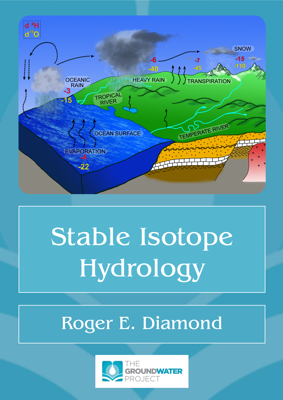The stable isotopes of hydrogen and oxygen in the water molecule can provide insights into the movement of water that chemistry and physical methods (water levels, etcetera) sometimes cannot. Whether in the atmosphere, biosphere, hydrosphere or geosphere, stable isotope compositions can be used to trace flows of water, sometimes quantitatively. These flows include the key steps such as evaporation, condensation, precipitation, recharge, transpiration and discharge at springs or boreholes.
The book begins by explaining what isotopes are, how they behave (fractionation, distillation, etc.) and how they are measured and reported in the delta notation. Then follow sections on calculation and significance of meteoric water lines, isotopic effects like the temperature or altitude effect, use of the deuterium excess parameter, and methods like mass balance and hydrograph separation. Several case studies are included to illustrate the application to problems like recharge estimation, leakage of surface water into groundwater and residence time of groundwater. Finally, there are some tips on water sampling for stable isotopes and some exercises with worked answers.

